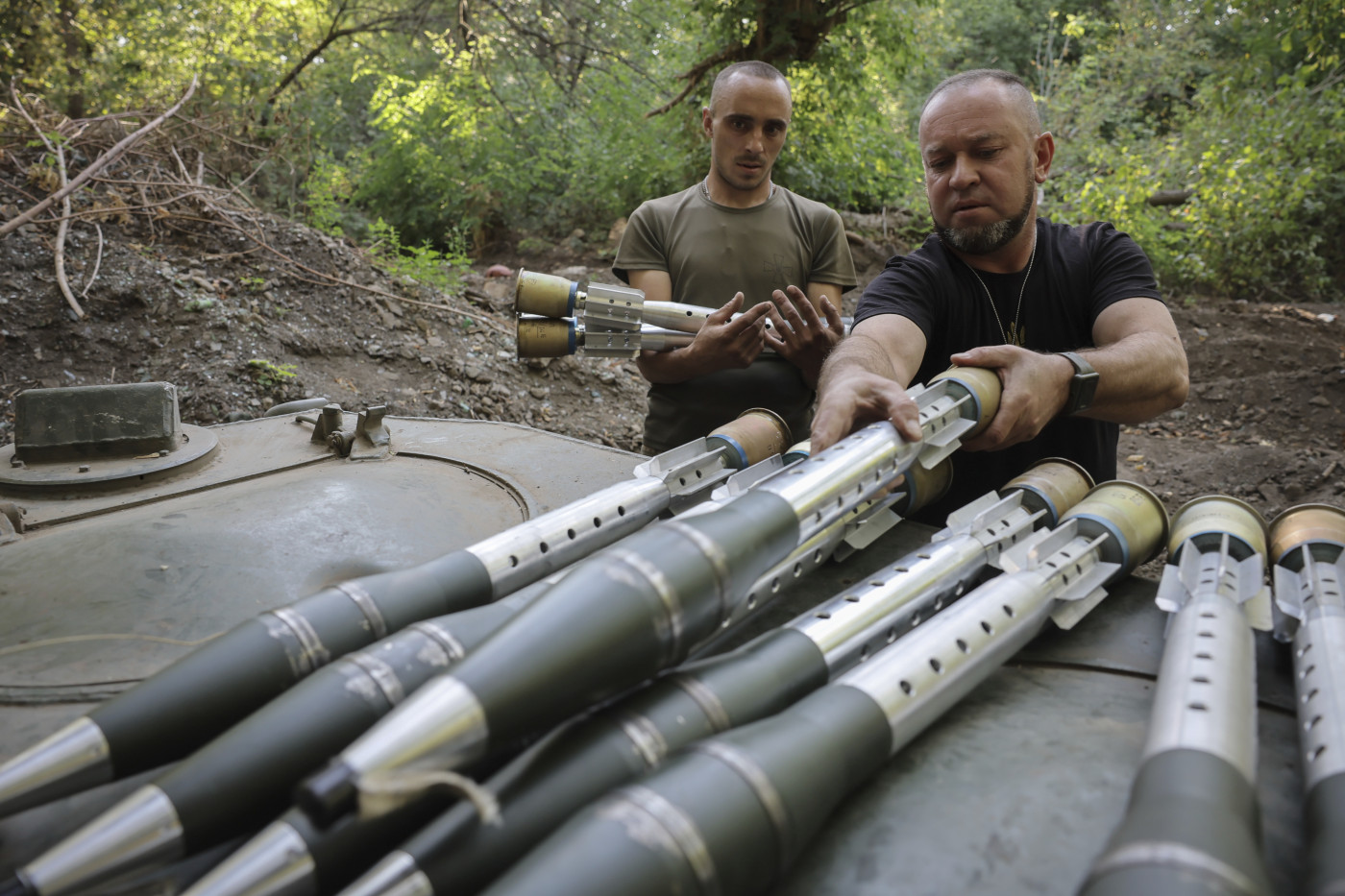US Glide Bombs Used to Wipe Out 40 Russian Troops in Kursk, Kyiv Says
Ukrainian forces dropped a barrage of U.S.-made glide bombs to eliminate 40 Russian troops as Moscow suffered significant losses amid the daring Kursk incursion.
Ukraine's armed forces published a video that appears to show high-precision American GBU-39 bombs being dropped on a Russian platoon base in Russia's Kursk region.
Footage circulating on social media shows multiple explosions and thick plumes of gray smoke towering over the sky of a platoon stronghold of Moscow's forces.
The commander of the Air Force of the Armed Forces of Ukraine, Nikolai Oleshchuk, said Ukraine struck Russian positions in the Kursk region.
"The UAV control point, an electronic warfare unit, equipment, weapons, and up to 40 Russian servicemen were hit," the Armed Forces of Ukraine said in a statement published on Telegram.
"This is what the Air Force airstrike with high-precision American GBU-39 bombs looks like on a platoon base in the Kursk region."
Glide bombs are standard bombs that are modified with wings and navigation systems, allowing them to glide toward a target. Some glide bombs are designed this way initially, while others receive these upgrades after production.
These "gliding" enhancements allow the bombs to travel further and are more accurate than unguided bombs.
Russia has been pummeling Ukrainian border regions with strikes after Kyiv launched a surprise assault on August 6, aimed at preventing Moscow's ability to attack Ukraine.
According to the Ukrainian military, Kyiv's forces now control 93 settlements in the Kursk region.
Victoria Vdovychenko, program director for security studies at the Centre for Defense Strategies, told Newsweek the Ukrainian military is utilizing glide bombs as a "new and innovative" use of Western military aid.
"It represents a versatile 250-pound guided munition designed for extended range and all-weather, day or night operations."
The SDB system includes a smart carriage that holds four 250-pound guided air-to-surface bombs, capable of targeting high-priority fixed and stationary targets.
"This bomb represents a significant advancement for the military, offering the ability to carry up to four smart munitions per 1760 store location, thereby increasing the effectiveness and efficiency of airstrike missions," Vdovychenko said.
Ukrainian President Volodymyr Zelensky said the Kursk incursions aim to create a buffer zone to prevent further attacks by Moscow across the border.
The incursion is also intended to force Russia to redeploy troops from the front lines in Ukraine to Kursk Oblast, which could affect the pace and prospects of the enemy's offensive efforts in Ukraine.
"The redeployment and deployment of reserves to Kursk Oblast may impact the pace of Russian offensive operations in other directions, but it will take several weeks to see this impact," Vdovychenko told Newsweek.
Russia has regularly deployed Soviet-era dumb munitions, known as glide bombs, weighing up to 1,500 kg and retrofitted with GPS navigation systems and fixed- wings to aggressively bombard Ukraine.
The use of these modified munitions represents a blend of old and new military technologies, enabling militaries to deploy a large number of relatively cheap but highly destructive weapons. The retrofitting process transforms these once-basic bombs into formidable precision-guided weapons, making them a powerful tool in a military arsenal.
Their deployment has had devastating effects, as they are capable of causing massive destruction to both military and civilian infrastructure.
Two people were killed after a Russian glide bomb attack on Thursday night in Ukraine's northeast Kharkiv, officials said.
Last year, a Russian jet accidentally dropped a guide bomb in Belgorod. Multiple buildings were damaged, and at least three people were injured. The region's governor said a "huge" crater was left in the city center.
Meanwhile, India's prime minister Narendra Modi has landed in Kyiv for bilateral talks with Zelensky. The two are set to hold a press conference later today.
This is the first time an Indian leader has visited Kyiv since Ukraine became an independent country in 1991.
Modi's visit comes after he faced backlash for hugging Russian President Vladimir Putin when they met in Moscow in July.
Do you have a story Newsweek should be covering? Do you have any questions about this story? Contact LiveNews@newsweek.com
Disclaimer: The copyright of this article belongs to the original author. Reposting this article is solely for the purpose of information dissemination and does not constitute any investment advice. If there is any infringement, please contact us immediately. We will make corrections or deletions as necessary. Thank you.

